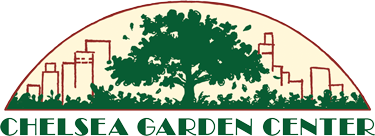Summer gardening presents an excellent opportunity for both beginners and experienced gardeners to grow a wide variety of plants, thanks to extended daylight hours, warm soil, and consistent temperatures. Below you'll find our quick tips for keeping your garden happy this summer!
Watering
All living things need water. Some plants are happier with a lot and others thrive with less moisture, but all garden plants fail if they totally dry out. Poor watering results in a garden that will not be healthy or beautiful. Please check your soil to ensure that water is reaching lower root levels, and that the soil has enough moisture at sufficient depth.
Sunny areas with smaller containers need more frequent watering than moisture retentive garden soil in shady areas. Plants that need moist soil will require watering when the soil is beginning to dry, while plants that like sun and arid conditions prefer to dry a little more before watering. All prefer deep watering, only as needed. Please check regularly, even if you have an irrigation system.
Plant Grooming and Deadheading
Many garden plants benefit from grooming, deadheading and light pruning in summer. Most annuals require deadheading to maintain vigor and encourage reblooming. They also tend to be much healthier and look better with gentle cleaning.
Some reblooming perennials benefit from deadheading early in the season. Many native plants, and several well-chosen structural non native perennials, do not need deadheading, and will provide much needed ecological benefit and textural/ structural value in New York gardens.
Tie in growing stems of climbers to create shape and structure as preferred. Cut back only the new growth that is extreme excess. Your primary prune should generally be in late winter/early spring.
Cut back dead, damaged and diseased plant material, and remove from garden.
Weed Removal and Plant Health
Check weekly for weeds, remove them while they are still small. It is better for your chosen plants to have less competition, and much easier for those garden plants not to have big weeds yanked out from around them!
Check plants weekly for any issues, including pests and disease. Improve growing conditions where there are issues. If that is not sufficient, minimize harm by choosing a pesticide that is organic. Use carefully, minimizing collateral damage. Note what grows well in each situation and avoid plants that are not thriving in any micro-ecological zone for future plantings. Ideally, you will not use pesticides.
Plant Nutrition
Use good quality container mix when planting in containers. Add good quality composted organic material to planting areas when possible.
After weeding, top dress with a little compost, when practical. It cuts down on light sensitive weed germination, looks great, and increases soil health.
Add slow-release fertilizer, sparingly, to containers when planting, and to existing planted containers in late March.
Add appropriate organic fertilizer, sparingly, to most garden areas in late March and again in early June. A third application in late August should be the last application.
Most native plants planted in the ground prefer little if any additional plant food, most will benefit from compost, and chopped leaves in winter, rather than garden fertilizers. They also do better with early spring cutbacks which also supports our native fauna, and protects the soil.
Design
Enjoy your green space and still plan on better! Look at what is working, note it, and begin thinking about your perfect plants, and garden…








